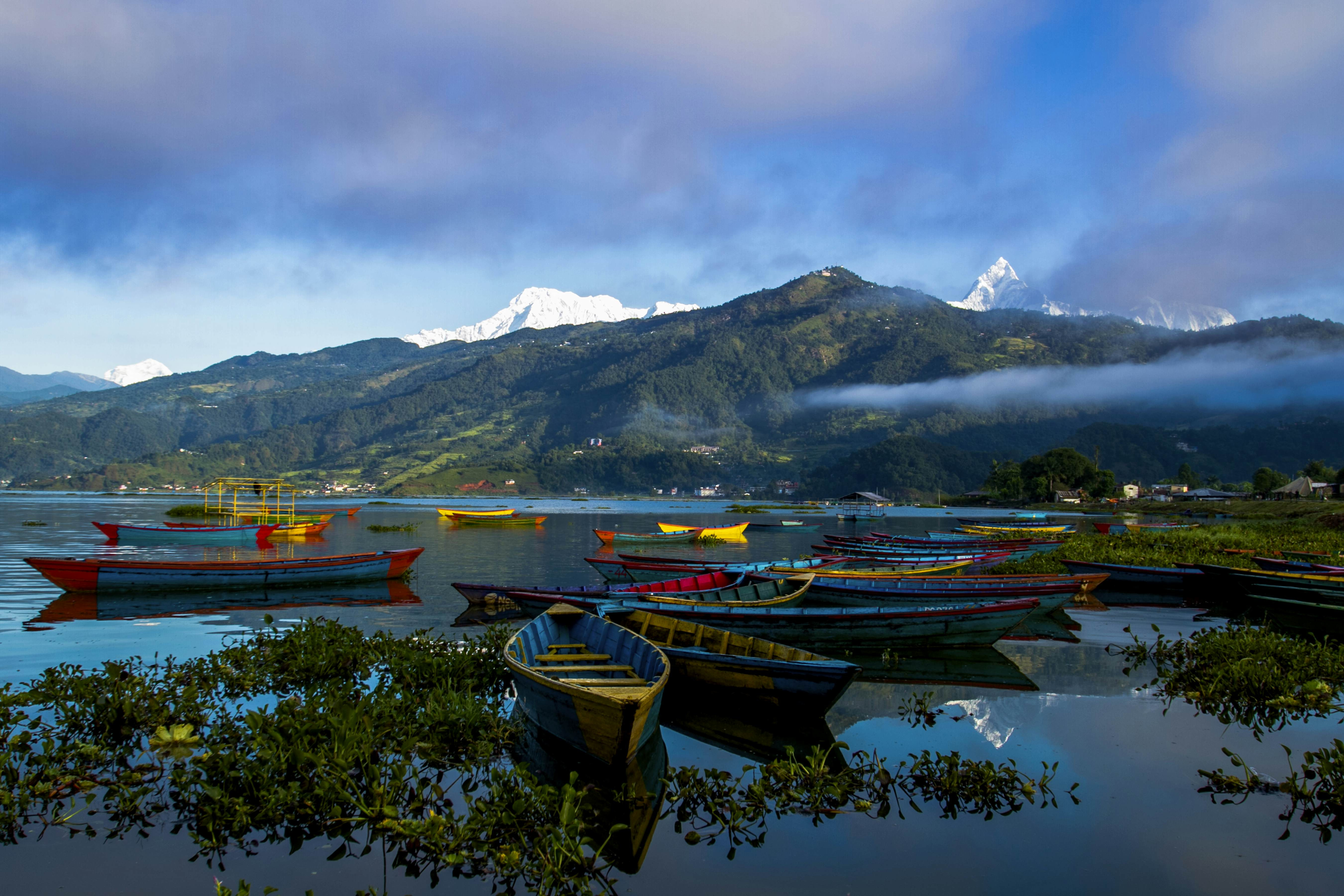Nepal, a landlocked country celebrated for its breathtaking Himalayan landscapes, offers far more than just mountain vistas. This diverse nation is a treasure trove of ancient cultures, vibrant cities, serene natural parks teeming with wildlife, and sacred pilgrimage sites for both Hindus and Buddhists. Whether you’re an adventure seeker, a culture enthusiast, or simply looking for a peaceful escape, Nepal has something unique to offer every traveler.
Planning a trip to Nepal requires considering your interests to pinpoint the perfect destinations. Trekking enthusiasts are naturally drawn to the mountains, but the choice is vast. Each region presents distinct trekking experiences and varying levels of accessibility from major urban centers.
To guide you in selecting your ideal Nepali adventure, we’ve curated a detailed list of the top destinations, catering to both leisurely sightseeing and more active itineraries.
1. Kathmandu Valley: A Synthesis of History, Culture, and Spirituality
Best for exploring historic palaces and ancient temples
Virtually every journey to Nepal begins in the Kathmandu Valley, and this vibrant capital region truly warrants extensive exploration. Historically a mosaic of independent kingdoms—notably Kathmandu, Patan (Lalitpur), and Bhaktapur—the Kathmandu Valley today is a sprawling urban area, approximately 25km (15 miles) wide, gradually encroaching upon the surrounding farmlands. The valley’s rich history stretches back millennia, and visitors can still marvel at ancient temples, magnificent medieval palaces, and immerse themselves in the living traditions of the indigenous Newari culture, amidst the modern cityscape.
The historical hearts of Kathmandu, Patan, and Bhaktapur are of prime interest to travelers. These three ancient cities together form a UNESCO World Heritage Site, encompassing seven distinct monument zones. These include the iconic Durbar Squares of Kathmandu, Patan, and Bhaktapur, each a testament to Nepal’s royal past, and the revered Hindu and Buddhist sites of Pashupatinath Temple, Boudhanath Stupa, Swayambhunath Stupa (also known as the Monkey Temple), and Changu Narayan Temple. While the first six sites are popular tourist hotspots, Changu Narayan, situated on the northeastern edge of the Kathmandu Valley, remains a less crowded gem, ideal for a more tranquil experience, especially during peak tourist season.
Travel Tip: Contrary to common perception, Kathmandu’s elevation is a moderate 1400m (4600ft), meaning altitude sickness is rarely a concern. The climate is generally mild to hot, particularly from March through October.
 A panoramic view of Kathmandu Valley showcasing ancient temples and modern buildings
A panoramic view of Kathmandu Valley showcasing ancient temples and modern buildings
2. Solukhumbu District: Gateway to Everest, the Crown Jewel of Nepal
For experiencing the majestic Mount Everest (Sagarmatha)
On exceptionally clear days, and if you know exactly where to look, a faint glimpse of Mount Everest (Sagarmatha in Nepali, Chomolongma in Sherpa) might be possible from Kathmandu. However, to truly witness the grandeur of the world’s highest mountain, a journey to the Solukhumbu District, northeast of the capital, is essential.
There are no roads leading to Everest on the Nepali side. The most common access point for those embarking on the iconic Everest Base Camp trek in the Solukhumbu District is a flight from Kathmandu to Lukla. Lukla itself is a village that marks the beginning of a several-day trek towards the mountain. Solukhumbu is also home to Sagarmatha National Park, a protected area of immense natural beauty and cultural significance, primarily inhabited by the Sherpa people, known for their unique Tibetan-derived culture and mountaineering expertise.
Travel Tip: For travelers short on time but eager to see Everest, scenic Everest flights are available from Kathmandu, offering breathtaking aerial views of the mountain range.
3. Mustang Region: Discovering Tibetan Culture in Nepal
Best for experiencing a unique Tibetan-influenced landscape and culture
Nestled on the northern side of the Annapurna Range, bordering the Tibetan Plateau, lies the Mustang Region. This high-altitude desert landscape is characterized by its stark beauty and strong Tibetan cultural heritage. Access to Mustang can be an adventure in itself. Options include a short, scenic flight from Pokhara to Jomsom, which takes you through the Kali Gandaki Gorge, the deepest gorge in the world, or a rugged 160km (100-mile) journey by 4WD. Trekking via the Annapurna Circuit is another popular route to reach Mustang.
Mustang is geographically and administratively divided into Lower and Upper Mustang, with significant differences in accessibility and permits. Lower Mustang is relatively accessible to all travelers. However, Upper Mustang is restricted to non-Nepali tourists, requiring a guided tour and a special permit costing a minimum of US$500 for 10 days, plus US$50 per day thereafter. Key attractions in Mustang include the apple orchards of Marpha village, the sacred Kagbeni village at the confluence of the Kali Gandaki and Jhong Khola rivers, the Muktinath Temple, a revered pilgrimage site for both Hindus and Buddhists, and Lo Manthang, the ancient walled capital of Upper Mustang.
Travel Tip: Mustang is largely inaccessible during the monsoon season (June to early September) due to frequent road washouts and flight cancellations. Winter in Mustang, particularly Upper Mustang, is extremely cold and snowy, making travel challenging.
 Wooden boats on the serene Phewa Lake in Pokhara, Nepal
Wooden boats on the serene Phewa Lake in Pokhara, Nepal
4. Pokhara: Nepal’s Lakeside Paradise
Best for relaxation and stunning lakeside scenery
Pokhara, located approximately 200km (125 miles) west of Kathmandu, Nepal’s second-largest city, presents a stark contrast to the bustling capital. Situated on the shores of the serene Phewa Lake (Phewa Tal) and at the foothills of the majestic Annapurna Himalaya, Pokhara is renowned for its unparalleled mountain views and laid-back atmosphere.
Many visitors pass through Pokhara as a starting or ending point for treks in the Annapurna region, benefiting from its road and air connections to various mountain towns. In Pokhara itself, popular activities include leisurely boat rides on Phewa Lake, enjoying picturesque sunsets from the Lakeside area, white water rafting on the Seti River, paragliding from Sarangkot hill offering panoramic views, visiting the Shanti Stupa (World Peace Pagoda) for spiritual reflection, and taking a ride on the Annapurna Cable Car for breathtaking mountain vistas.
Travel Tip: For individuals with respiratory sensitivities or families traveling with children, Pokhara might be a preferable destination over Kathmandu due to its significantly better air quality and less congested traffic.
5. Annapurna Himalaya: Trekking Trails for Every Adventurer
Best for diverse and numerous trekking opportunities
The Annapurna Himalaya range is readily accessible from Pokhara; the starting points for numerous treks are just a short drive from the city. From the iconic, pointed peak of Machhapucchre (Mount Fishtail) to the imposing, snow-covered Dhaulagiri, the Annapurnas are a truly magnificent mountain range.
Adventure enthusiasts will find a plethora of trekking options in the Annapurna region. For families or those seeking easier treks with rewarding views, Australian Camp/Dhampus and Poon Hill are excellent choices. For more experienced trekkers or those with more time, the Annapurna Circuit, Annapurna Sanctuary (also known as ABC trek), Mardi Himal trek, and the challenging Lake Tilicho trek offer more extended and strenuous adventures.
Travel Tip: For a 10-day trip to Nepal, consider combining a few days in Kathmandu and Pokhara with a shorter trek in the Annapurna Himalaya, and perhaps even a wildlife safari in Chitwan National Park for a diverse Nepali experience.
6. Lumbini: The Birthplace of Buddha and a Haven of Peace
Best for exploring Buddhist temples and sacred pilgrimage sites
For travelers interested in Buddhism, Lumbini, situated in southwestern Nepal, is an essential destination. It is revered as the birthplace of Siddhartha Gautam, the historical Buddha. Lumbini is a UNESCO World Heritage Site and encompasses not only sites directly related to Buddha’s birth, such as the Maya Devi Temple, believed to be the exact location of his birth, but also a complex of monasteries and temples constructed by Buddhist communities and nations from around the globe. Lumbini is accessible via a small international airport or a longer overland journey from Kathmandu or Pokhara.
 A serene monk in saffron robes stands before a golden Buddha statue in Lumbini, Nepal
A serene monk in saffron robes stands before a golden Buddha statue in Lumbini, Nepal
7. Chitwan National Park: Nepal’s Wildlife Jewel
Best place for immersive wildlife safaris in Nepal
Nepal’s appeal extends beyond its mountains. The subtropical plains of the Terai, bordering India, are rich in biodiversity, home to a variety of fauna including the endangered one-horned rhinoceros (whose population in Chitwan has seen remarkable growth), Bengal tigers, gharial and mugger crocodiles, various deer species, and a stunning array of birdlife.
Chitwan National Park is the most popular and accessible national park in the Terai region from both Kathmandu and Pokhara. The town of Sauraha serves as the gateway to the park, offering opportunities for jeep safaris, canoe rides, nature walks, visits to elephant and wildlife rehabilitation centers, and cultural experiences with the indigenous Tharu people of Chitwan.
Travel Tip: For optimal wildlife viewing in Chitwan, visit in late January or early February. During this time, local communities clear the tall elephant grass, improving visibility for spotting wildlife.
8. Ilam: Tea Gardens and Himalayan Vistas
Best for tea plantation tours and views of Kanchenjunga
Often overlooked by mainstream tourists due to its location in eastern Nepal, Ilam is the heart of Nepal’s tea industry. Despite bordering Darjeeling in India, a world-renowned tea region, Ilam remains a lesser-known gem in the tea world, which is undeserved. Visitors to Ilam can explore sprawling tea gardens, learn about tea production, and enjoy magnificent views of Mount Kanchenjunga, the world’s third-highest peak, situated on the Nepal-India border north of Ilam. Trekking in the Ilam region is less frequented but offers numerous options, including the challenging Kanchenjunga Circuit Trek for adventurous hikers.
Nepal, with its diverse landscapes and rich cultural tapestry, truly stands out as a premier travel destination. From the towering Himalayas to the fertile plains, and from ancient temples to vibrant cities, Nepal offers an unforgettable experience for every traveler.

